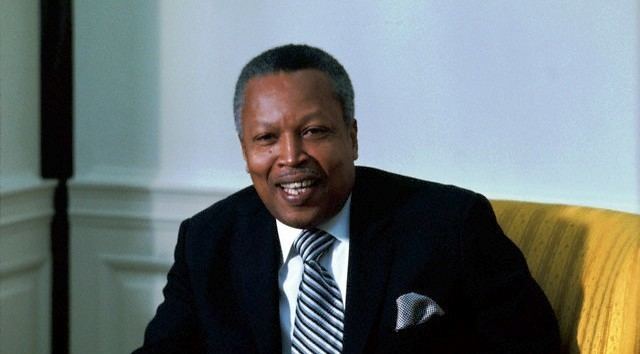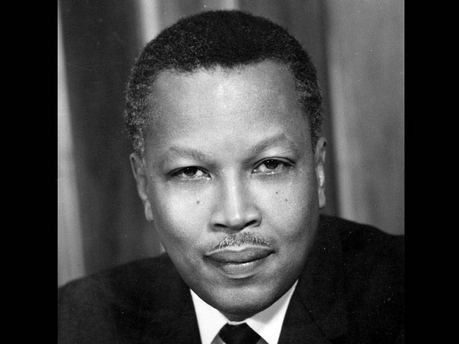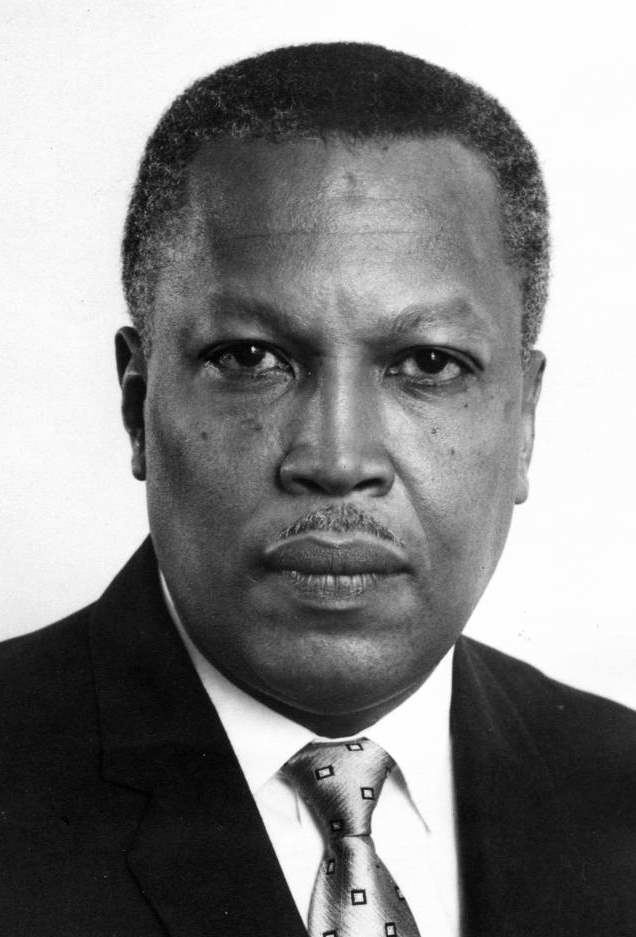Nationality Jamaica | Name Hugh Shearer Preceded by Donald Sangster | |
 | ||
Spouse Denise Shearer (m. ?–2003) Previous office Prime Minister of Jamaica (1967–1972) Children Mischka Garel Shearer, Howard Shearer, Hilary Shearer Similar People Donald Sangster, Elizabeth II, Peter Tosh | ||
SYND 05-7-69 ROCKERFELLER VISITS JAMAICAN PRIME MINISTER
Hugh Lawson Shearer ON OJ PC (18 May 1923 – 5 July 2004) was a Jamaican politician and trade unionist, who served as the third Prime Minister of Jamaica, from 1967 to 1972.
Contents
- SYND 05 7 69 ROCKERFELLER VISITS JAMAICAN PRIME MINISTER
- Early life
- Personal life
- Career and trade unions
- Political career
- Death and legacy
- References

Early life

Born in Martha Brae, Trelawny Parish, Jamaica, near the sugar and banana growing areas, Shearer attended St Simon's College after winning a parish scholarship to the school. He then graduated from Howard University School of Law.
Personal life

Hugh Shearer was married twice during his life.
Shearer was separated from his first wife, with whom he had three children, by the time he became Prime Minister in 1967.
Hugh Shearer married his First wife Lunette Shearer on 7 October 1947 at the age of 24. Hugh Shearer was a Journalist at the time and his wife an accounting clerk. They purchased a property at Chisholm Avenue where they lived and until Mr. Shearer left the matrimonial home. http://supremecourt.gov.jm/sites/default/files/judgments/Shearer%20,Lunette%20v%20Hugh%20Lawson%20Shearer.pdf
Hugh Shearer married his second wife, Dr. Denise Eldemire Shearer, on August 28, 1998. She is the daughter of the late Dr. Herbert Eldemire, who served as Jamaica's first Health Minister from 1962 to 1972. The couple were married for nearly 6 years, until his death in July 2004.
He had one son and two daughters.
Career and trade unions
In 1941 he took a job on the staff of a weekly trade union newspaper, the Jamaican Worker. His first political promotion came in 1943, when Sir Alexander Bustamante, founder of the Jamaican Labour Party (JLP), took over editorship of the paper and took Shearer under his wing. Shearer continued to get promotion after promotion within the union and acquired a Government Trade Union scholarship in 1947.
He was appointed Island Supervisor of Bustamante's trade union, BITU, and shortly afterwards elected Vice-President of the union.
Political career
Shearer was elected to the House of Representatives of Jamaica as member for Western Kingston in 1955, an office he retained for the next four years until he was defeated in the 1959 elections.
He was a member of the Senate from 1962 to 1967, at the same time filling the role of Jamaica's chief spokesman on foreign affairs as Deputy Chief of Mission at the United Nations. In 1967 he was elected as member for Southern Clarendon and, after the death of Sir Donald Sangster, appointed Prime Minister on 11 April 1967.
Thanks to his work with the Jamaican Worker earlier in his life, Shearer managed to stay on generally good terms with the Jamaican working class, and was generally well liked by the populace. However, he did cause an outcry of anger in October 1968 when his government banned the historian, Walter Rodney from re-entering the country. On 16 October a series of riots, known as the Rodney Riots broke out, after peaceful protest by students from the University of the West Indies campus at Mona, was suppressed by police; rioting spreading throughout Kingston. Shearer stood by the ban claiming that Rodney was a danger to Jamaica, citing his socialist ties, trips to Cuba and the USSR, as well as his radical Black nationalism.
Shearer was generally uncomfortable with notions of pan-Africanism or militant black nationalism. He was also insecure about the stability of newly independent Jamaica in the late 1960s.
His term as Prime Minister was a prosperous one for Jamaica, with three new alumina refineries were built, along with three large tourist resorts. These six buildings formed the basis of Jamaica's mining and tourism industries, the two biggest earners for the country.
Shearer's term was also marked by a great upswing in secondary school enrolment after an intense education campaign on his part. Fifty new schools were constructed.
It was by pressure from Shearer that the Law of the Sea Authority chose Kingston to house its headquarters.
In the 1972 elections, the JLP was defeated and the People's National Party leader, Michael Manley, became Prime Minister. Between 1980 and 1989, during the prime ministership of Edward Seaga, who had succeeded him as leader of the JLP in 1974, Shearer was deputy prime minister and minister of foreign affairs.
Death and legacy
He died at his home in Kingston on 5 July 2004, at the age of 81. The Most Honourable Hugh Lawson Shearer was survived by his wife, the Most Hon. Dr. Denise Eldemire Shearer, sons Corey Alexander, Howard, Lance and Donald, and daughters Hope, Hilary, Heather, Mischka Garel, and Ana Margaret Sanchez.
On 14 May 2009, the Bank of Jamaica announced a plan to issue a JA$5000 note with the likeness of Shearer on it, as was explained in detail on Monday 18 May 2009 by the Governor of Jamaica's Central Bank Derick Milton Latibeaudiere.
